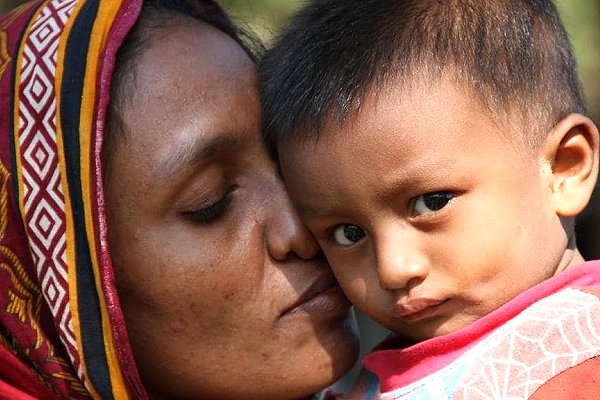
COVID-19 pandemic reveals ‘just how vulnerable people are worldwide to unexpected crises – and work needed to improve resilience’

(This story appeared first on Thursday the website of the Thomson Reuters Foundation.)
In the congested slums of Mumbai, coronavirus lockdowns have left the poor – who struggle even in good times – battling to access basics like food or medical care, according to Sheela Patel, head of an international organization for slum residents.
“There’s no work, no food, no money to pay rent, no way to go home to families who are now sitting in rural areas also with no money,” she told an online discussion on Thursday [word cloud].
The global pandemic, she said, has revealed just how vulnerable people worldwide are to unexpected crises – and how much work is needed to improve their resilience as cities and countries begin making coronavirus recovery plans.
“What COVID-19 has shown us is that something that happens in some [distant] locality can produce a local impact – and [then] we all face the consequences,” said Patel, a Mumbai resident and chair of Shack/Slum Dwellers International.
From South Pacific islanders hit by deadly Cyclone Harold last month amid coronavirus containment measures to East African farmers battling locusts, floods and COVID-19 at the same time, countries increasingly find themselves facing multiple crises at once and feeling unprepared, Patel and others said.
‘We’re all plugging for a new normal’
“We now understand how vulnerable we really are,” Christina Chan, a climate-change resilience expert with the Washington-based World Resources Institute, said during the event.
Changing that will require not just reviewing contingency plans and protocols but harnessing global economic recovery efforts to tackle multiple problems at once and improve the situation for the world’s poor, climate and aid experts said.
That could include channelling a bigger share of development funds to poor communities, or ensuring stimulus funds to kick-start pandemic-hit economies also address climate threats.
If trillions of dollars are going to be spent on coronavirus recovery – the largest amount since the end of World War II – “let’s think about what we want”, said Maarten van Aalst, director of the Red Cross Red Crescent Climate Centre.
“This needs to be part of a bigger ambition,” he added.
Heat threat
For Patel, who also leads a network of Indian resource centres working with the most vulnerable, that means intervening now to make sure recovery packages are spent creatively.
“We need to have courage to enter the spaces that were hallowed – where we had no right to knock on those doors – to ask simple but very difficult questions,” she said.
Spending to shore up big industries in times of crisis has not trickled down effectively to help the poor in India, she said, and if that is repeated, it won’t “produce transformation for the 40 per cent of people destroyed by wage losses in the crisis”.
International aid should be deployed to improve basic health systems that could boost resilience to fast-emerging threats like increasingly deadly heatwaves, which will be hard to battle if some countries remain in lockdown during hot summer months, she and van Aalst said.
“Just imagine you’re living in a house that is 100-400 square feet, with houses back-to-back so you don’t have much ventilation, you have a tin roof and it’s 42 degrees Celsius,” Patel said.
Floods from monsoon rains will also start hitting people in the coming months, she added – and funds normally used to cut risks from those disasters are going to battle the pandemic.
Van Aalst warned rich countries also face intertwined COVID-19 and weather threats. In the United States, the Red Cross has already had to figure out ways to respect social distancing while doing tornado evacuations this year, he said.
Stimulus money
Stephane Hallegatte, lead economist with the Global Facility for Disaster Reduction and Recovery at the World Bank, said spending now to improve social welfare systems could not only help address COVID-19 but have a big pay-back when other disasters, from earthquakes to storms, strike.
“If we do it in a way that is sustainable and can be sustained over time, we will exit more resilient than we entered this crisis,” he told a separate webinar on Thursday.
The World Bank has created a 30-question checklist to screen COVID-19 recovery projects that examines not only how many jobs they can create and how quickly they can be started, but also whether they build skills and benefit the environment.
Spending stimulus money well can create “additional long-term benefits if we pick the projects right”, Hallegatte said.
But winning cash for climate-smart water and sanitation programmes or strengthening health systems will be a challenge – and take persistent pressure, Van Aalst and Patel warned.
“Past experience tells you when the crisis is over, everybody goes back to doing the things they used to,” Patel said.
“We’re all plugging for a new normal,” she added.
Aziza, 28, shares a moment with her son after they receive medical care at a mobile clinic being run by the Bangladesh Red Crescent Society and the ICRC in the Bangladesh camps. The camps around Cox’s Bazar remain officially free of coronavirus, wrote Australian Red Cross delegate Anna Bowen last week, but the general economic fallout from the pandemic is now a major threat. (Photo: BDRCS)